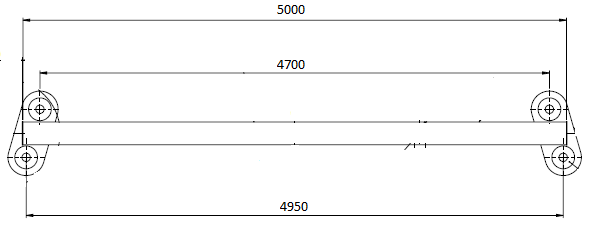patchlam
Chemical
- Oct 15, 2015
- 52
Dear all,
Good day to you all. I am currently calculating the safety working load for my hollow tube spreader beam.
Basically, the hollow tube is in the dimension of 200x200x8 RHS and the two ends are installed with lug. Please find the other details below:

The target load is 36 tonnes and the material of hollow tube is S275 J2 G3
I used the calculator below (Beam Bending Equations Calculator with Ends Overhanging Supports and a Two Equal Loads applied at Symmetrical Locations) and found out that the deflection is more than the allowable.
Calculator:
But my senior showed me the past project which has the almost similar dimension, the beam can actually lift up to 42 tonnes.
May I know whether the calculator I used is applicable for my design? Can it lift the weight of 36 tonnes?
Thanks!
Good day to you all. I am currently calculating the safety working load for my hollow tube spreader beam.
Basically, the hollow tube is in the dimension of 200x200x8 RHS and the two ends are installed with lug. Please find the other details below:

The target load is 36 tonnes and the material of hollow tube is S275 J2 G3
I used the calculator below (Beam Bending Equations Calculator with Ends Overhanging Supports and a Two Equal Loads applied at Symmetrical Locations) and found out that the deflection is more than the allowable.
Calculator:
But my senior showed me the past project which has the almost similar dimension, the beam can actually lift up to 42 tonnes.
May I know whether the calculator I used is applicable for my design? Can it lift the weight of 36 tonnes?
Thanks!
